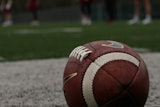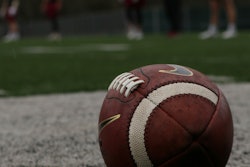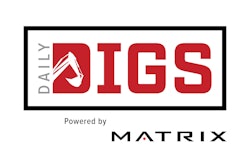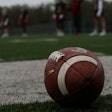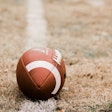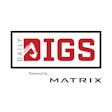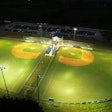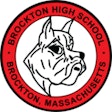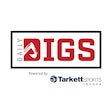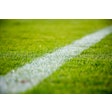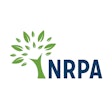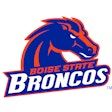Maintaining athletic fields is crucial to their performance, and doing it right takes expertise, time and money. For some athletic departments, in-house capabilities are more than sufficient and save the added costs of hiring outside professionals.
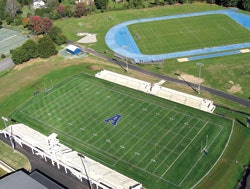 (Photo courtesy of Stantec)
(Photo courtesy of Stantec)Maintaining athletic fields is crucial to their performance, and doing it right takes expertise, time and money. For some athletic departments, in-house capabilities are more than sufficient and save the added costs of hiring outside professionals. But for others, it makes more sense to contract out field maintenance. How do you know which approach is best for your institution?
Because fields undoubtedly require the most attention of all the components of an outdoor facility, the first priority should be making sure those responsible for the fields have a thorough understanding of them. Whether that responsibility lies with a dedicated sports field manager, the athletic department, parks and recreation staff or a public works department, whoever is in charge should have a good working knowledge of when and how often each field is used for which sports or activities, the composition of each field, specific quirks or needs each one has and any other special considerations.
A thorough field assessment and testing program can help identify these characteristics. Not all fields are created equal, so documenting and understanding the individual physical and chemical qualities and needs is essential. Conducting assessments on a regular basis and keeping a log of dates, issues, modifications and other factors will also help ensure you have the most up-to-date information on your facilities.
Development of a maintenance plan should take into account these individual needs, as well as the level of care you desire for your fields. If the fields are used for sporadic activities as part of a town recreation area, simply maintaining decent grass and keeping up with the striping might be sufficient goals. Conversely, if the fields host competitive athletic teams, it may be expected or even mandated that the fields are maintained at the highest level possible. Annual maintenance costs for a mid-level field, for instance, typically come in at around $10,000 to $12,000.
Planning for the upkeep of the rest of your outdoor facilities should follow a similar but simpler evaluation process (see "Outside Shot," below). Various components of outdoor sports facilities, such as bleachers, fences and dugouts, can typically be maintained by an in-house facilities department in the same manner that it looks after other structures on campus or within the community. Once you've conducted an assessment of these elements and their ongoing needs, they can most likely simply be rolled into the maintenance schedule for the entire property.
At this point, conducting a cost/benefit analysis can help identify where to direct your money and resources. The primary factors to consider include:
- Time.Given the desired level of care you have identified, do you have the manpower to achieve it? What could take a general maintenance crew three days to complete because of their various responsibilities might be accomplished in eight hours by hired professionals. Ben Polimer, sports turf manager at Worcester Academy in Massachusetts, says time is a major factor in the school's decision to contract out large elements of its maintenance plan. "With limited manpower and other project constraints, it's difficult for us to do everything in-house," he says.
A high-intensity mowing regimen, for example, could keep utility crews quite busy. Proper maintenance of most natural turf fields entails mowing at least three times a week during the heavy growing or use period, and at least twice a week during less busy times. If that same in-house crew has the responsibility of mowing the rest of a large campus, hiring professionals might be a better option.
- Expertise. Even if your crew does have the time, it might not have the proper experience to meet the specific needs of athletic fields. Again, using the mowing example, are the in-house workers sharpening the mowers' blades regularly? Are they mowing at the right height and frequency? Do they vary the mowing patterns? Aside from more specialized tasks such as Aeration, topdressingand slit-seeding, even basic mowing could require very special attention that general maintenance staff might not possess. That's not to say they can't do those things; if mowing is the only major upkeep your fields need in order to maintain the desired level of performance, this kind of information could be included in the maintenance plan.
Similarly, irrigation may require some specific expertise. In areas with cold winter climates, the irrigation system will need to be winterized, a process the in-house crew may not have sufficient experience with. When in doubt about what to do, the safest bet is to hire a specialized contractor who can, at the least, develop a plan for the in-house crew to carry out.
- Equipment. The cost of specific pieces of equipment can be staggering. A topdressing machine, for instance, runs about $25,000, which might not seem efficient for a task that is only required once a year. "If we don't own the piece of equipment to do a certain job, it gets contracted out," says Polimer. "We share a tractor with other departments, so we usually contract out aeration, since that's easier in terms of scheduling than working around the other departments' needs. We don't have a sprayer, so we contract out any spraying. All of these costs go into our decision on what we have a contractor do versus what we do ourselves."
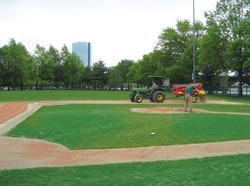 (Photo courtesy of Stantec)
(Photo courtesy of Stantec)Some of the equipment an athletic facility typically requires - and a ballpark price for each - includes:
- Utility vehicle for transporting and attaching various other tools: $10,000 (minimum)
- Large mower: $6,500
- Walk-behind mower: $1,000
- Fertilizer spreader: $700
- Powered aerator: $500
- Powered topdressing unit: $25,000
- Mower brushes for topdressing and core sweeping: $1,000
- Slice seeder: $4,000
Depending on what tools you already have, the initial costs of acquiring all of the equipment necessary to properly maintain your facility could run as low as $40,000 or top $100,000. But if the in-house staff has the funds and expertise to use the equipment, that upfront investment may save you the long-term costs of hiring contractors.
Of course, all of these decisions depend on your field maintenance budget. If you have very limited money and resources, your desired level of care will be much more modest than an institution with a large athletic department. For some municipalities, for example, the field maintenance budget falls under the auspices of the public works department. In those cases, putting that budget toward contracting out the maintenance might make more sense so that public works staff can attend to their many other responsibilities and the town can properly protect its investment.
Partnering with booster clubs, nonprofit agencies or other organizations to maintain your fields can be another option. When a number of organizations came together to build public playing fields along Boston's Charles River, they knew that one entity alone couldn't shoulder all of the maintenance responsibilities to keep the fields at the level envisioned. They established a fund for hiring outside contractors to handle professional mowing and cultural practices, while creating a partnership with the state to oversee day-to-day maintenance needs - checking on field conditions, cleaning up when needed, maintaining the field striping and so on.
As that example shows, including maintenance in your facility budget is essential, whether for existing fields or structures, or for those in development. Many communities are currently planning their first synthetic turf fields, which come with their own particular maintenance requirements. If planning such an installation, be sure to develop an appropriate maintenance program and consider those recurring costs as you continue your fundraising campaign.
Another means for efficiently budgeting maintenance is to contract out only certain elements, the costs of which will range widely depending on the service required, the region and the contractor. Most professionals will provide their services a la carte, although it may be more cost-effective to go for a more complete service package. If you only have the budget to hire out for select services, you may want to direct those monies to seasonal tasks that require specialized equipment and are required only once a year. Another option is to focus on your highest-maintenance fields, which are often the baseball and softball facilities. Between the mix of materials, watering, grooming and so on, the infield of a baseball/softball diamond is quite complex, and the expertise necessary to properly maintain it might be better left to a professional. Your in-house crew, meanwhile, can see to the mowing, lining and other tasks required on the less maintenance-intensive fields.
Once you establish a relationship with a contractor, your in-house staff will be able to rely on that resource when unexpected problems arise. You may only hire out for annual aeration, but if you get a fungus problem, you now have an expert you know and trust to whom you can turn for advice.
If you decide to hire outside help, do the proper due diligence, just as you would research a mechanic for your car or a painter for your house. What is their experience with fields similar to yours? Are they affiliated with an accredited organization such as the Sports Turf Managers Association? Can they provide references? How do their prices for like services compare with other local contractors?
Because each field is different - and each organization has different resources and constraints - the decision to contract out field maintenance is never black and white. But with a true understanding of your fields, your resources and your desired outcomes, you're better equipped to make the best decision for your facilities.
ESSENTIAL TIPS FOR CONTRACTING MAINTENANCE
- Assess your time, manpower and equipment to see what your staff can manage.
- Comprehensively review your athletic facilities and develop a maintenance plan that considers the needs and schedule for each component.
- Keep a log of field assessments and testing, recording when they occurred, what issues were raised, measures taken to address them and the results.
- Include maintenance costs in your initial planning and budgeting.
- If your budget is limited, contract out only seasonal tasks or those for the neediest fields, and do the rest in-house.
- Find partner organizations or agencies that could help defray the costs of maintenance.
- Talk to colleagues about their field maintenance programs and which professionals they hire.
- D.N. & M.N.
OUTSIDE SHOT
Regular inspection of all outdoor facilities is necessary to properly evaluate maintenance needs.
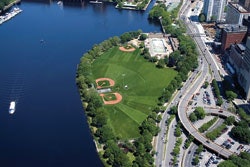 Photo of well-maintained athletic fields
Photo of well-maintained athletic fieldsFacility operators are typically counseled to perform regular inspections to mitigate the potential for injuries and injury-related lawsuits. But the same scheduled walk-throughs can also aid in determining what areas of maintenance might require outside help. Some of these include:
- Bleachers. Inspections of bleachers are required by building codes and state legislation in some jurisdictions. Although self-inspection can turn up minor areas of concern, such as bent cross braces in the understructure, regular inspection by a certified engineer or installer is also code-required, and beneficial, given that a professional will know all relevant statutes and how to meet them. Minor structural repairs, such as rebolting loose struts, should be within the abilities of an in-house maintenance crew, but professional refurbishers will have a better handle on solving larger bleacher problems.
- Light poles. The rash of light-pole collapses that made headlines two years ago has abated somewhat, but that doesn't mean responsibility for maintaining aging poles has. Because fatigue-induced cracks are not always visible to the naked eye, ultrasonic testing by a certified lighting technician is advisable, with any needed repairs typically performed by a licensed professional engineer.
- Protective screens and fences. Chain-link outfield fences should be inspected to ensure there are no potentially harmful protrusions, while protective screens (baseball backstops, and discus and hammer cages) should be checked to ensure they remain protective. Although regular maintenance is not typically needed for this product category, suppliers of fences, screens and netting around playing areas can be a good resource for upgrades and add-ons (corrugated plastic fence caps, for example) that can ensure player and spectator safety.
- Irrigation systems. Performing mowing and overseeding duties may be a perfectly reasonable expectation of your maintenance crew, but maintaining fields' irrigation systems is potentially more complex. Regular inspections to look for underground leaks and ensure sprinklers are functioning properly are a must, and outside turf or irrigation system contractors might be better able to realign sprinkler systems to ensure water isn't being unnecessarily wasted.
- Andrew Cohen













